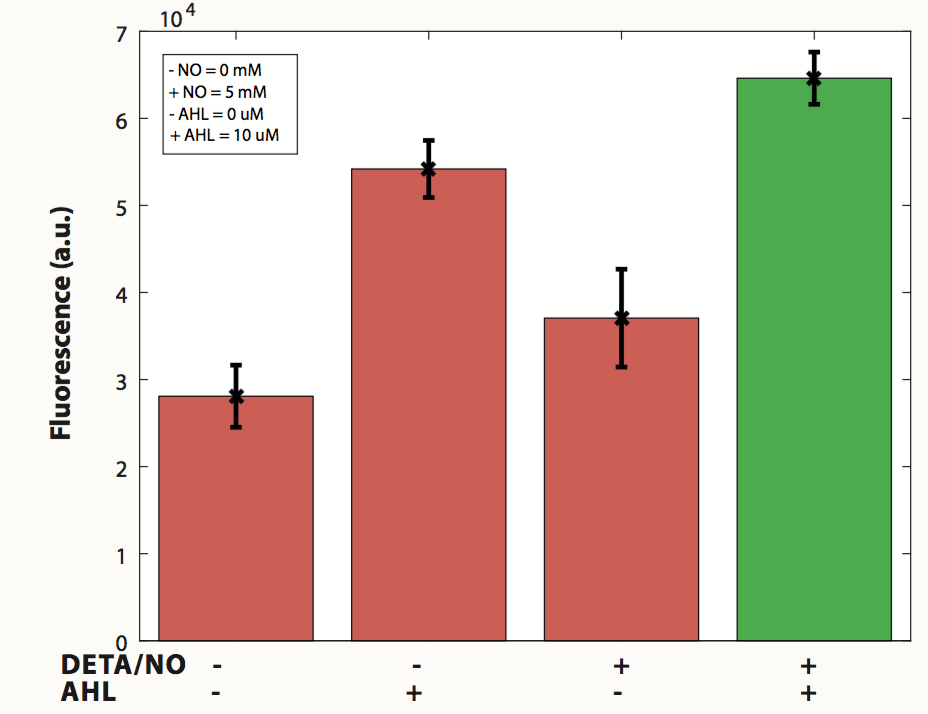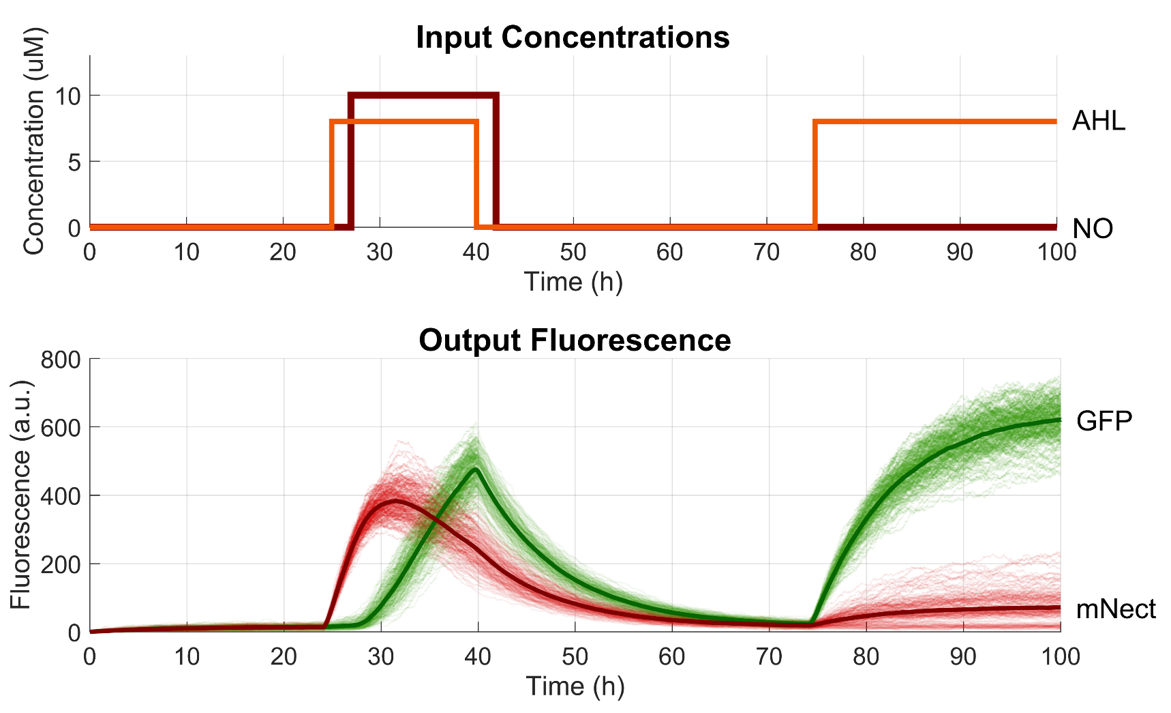Part:BBa_K2116028
bxb1 integrase under the control of nitric oxide and AHL responsive AND gate
We constructed a selection of AND gates responding to nitric oxide (NO) and 3OC6HSL (AHL). They were designed using the previously
described NorV promoter Part:BBa_K1153000. This Promoter (from here on refered to as PnorV) is the native promoter controlling
the nitric oxide reduction operon (norRVW) in E. coli [1]. Its transcriptional regulator, NorR, can bind to nitric
oxide and activate gene expression. Using the distinct properties of esaboxes, PnorV was designed to also be responsive
to AHL, giving it an AND gate behaviour. An esabox is an 18bp sequence to which the transcriptional regulator EsaR Part:BBa_K2116001
can bind. Transcription can be initiated by the specific AHL EsaR responds to [N-(3-oxo-hexanoyl)-L-homoserine lactone].
By placing one, two or three esaboxes at different positions in the vicinity of PnorV, different specificities for AHL and
NO were reached. We created and characterized a collection of these kind of AND gates. Our favourite AND gate Part:BBa_K2116011 is
here combined with our codon optimized Bxb1 recombinase Part:BBa_K2116025. Bxb1 is a phage integrase that mediates unidirectional site-specific recombination between two DNA recognition sequences, the phage attachement site, 'attP', and the bacterial attachment site, 'attB'. This recombination event is hereon referred to as a flip. Bxb1 belongs to the family of serine integrases and uses a catalytic serine for strand cleavage, recognizes shorter attP sequences, and does not require host cofactors. It mediates efficient site-specific recombination between two different sequences that are relatively short yet long enough to be specific on a genomic scale. These properties make Bxb1 an efficient tool, especially in combination with the here presented AND gate, for creating genetic logic gates, as demonstrated in various papers.
Kinetic Characterisation
We used a reporter construct Part:BBa_K2116024 with a promoter flanked between attB and attP sites Part:BBa_K2116021. Thus, we could investigate the kinetics of Bxb1 using flow cytometry (BD LSR Fortessa SORP) on time course samples.
Genetic Design
- Bxb1 was expressed under an AND gate promoter Part:BBa_K2116011, without any degradation tag Part:BBa_K2116026.
- We applied a dual fluorescence reporter system Part:BBa_K2116024 that expresses sfGFP Part:BBa_K2116017 when Bxb1 flips a directional promoter. In the non-flipped state the reporter expresses the red fluorescent protein mNectarine Part:BBa_K2116016.
Results
The behaviour of the composite part is close to what is expected from the characterisation of its individual parts. Some improvement could be made by changing the EsaR content of the cell. We expect the recombinase expression to therevy decrease when only AHL is present. For more information, see the discussion on Part:BBa_K2116026.
Visit our team wiki http://2016.igem.org/Team:ETH_Zurich/Switch_Module for a full discussion of these parts.
Sequence and Features
- 10COMPATIBLE WITH RFC[10]
- 12COMPATIBLE WITH RFC[12]
- 21COMPATIBLE WITH RFC[21]
- 23COMPATIBLE WITH RFC[23]
- 25COMPATIBLE WITH RFC[25]
- 1000COMPATIBLE WITH RFC[1000]
| None |


